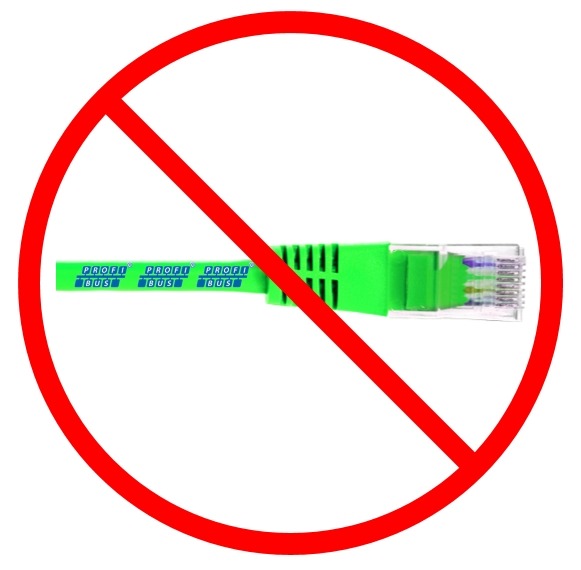Myth 1: PROFINET is PROFIBUS on Ethernet.
Reality: Although it builds on the concepts of PROFIBUS, PROFINET is a new protocol, tailored to Ethernet capabilities. Other Industrial Ethernets have  just wrapped up their old messages in a TCP/IP or UDP/IP wrapper and called it an Industrial Ethernet. PROFINET built the protocol from the ground up to take advantage of the benefits of Ethernet. Benefits like larger message sizes (1440 bytes compared to 244 bytes for PROFIBUS). By using all the techniques available with standard Ethernet, PROFINET achieves speed and determinism that cannot be achieved with the office-centric TCP and UDP techniques. TCP/IP still has its place in PROFINET though; see the next myth.
just wrapped up their old messages in a TCP/IP or UDP/IP wrapper and called it an Industrial Ethernet. PROFINET built the protocol from the ground up to take advantage of the benefits of Ethernet. Benefits like larger message sizes (1440 bytes compared to 244 bytes for PROFIBUS). By using all the techniques available with standard Ethernet, PROFINET achieves speed and determinism that cannot be achieved with the office-centric TCP and UDP techniques. TCP/IP still has its place in PROFINET though; see the next myth.
PROFIBUS has the largest installed base of any of the serial fieldbuses. So even though PROFINET is a different protocol, we couldn’t leave the installed base behind. The solution is a proxy. A proxy is like a gateway in that it connects two different networks, but unlike a gateway, the mapping between networks is standardized in the PROFINET specification. The proxy concept worked so well for PROFIBUS, it was extended to Interbus (the second most installed serial fieldbus), when its organization decided to forego their own Industrial Ethernet and use PROFINET. And from there it was extended to many other networks, including AS-i and DeviceNet.
Myth 2: PROFINET does not use TCP/IP.
 Reality: PROFINET DOES use TCP/IP… for configuration and diagnostic communication. But not for real-time communication. Sending messages through the TC/IP stack adds time and uncertainty to the message. The TCP/IP stack is just software – software that takes time to execute and not the same amount of time each time. While that is adequate for non-time-critical data, it is not adequate for real-time data. PROFINET surmounts this inadequacy by skipping TCP/IP for real-time data using a standard Ethernet field called EtherType. PROFINET uses EtherType 8892 to direct the PROFINET real-time message directly to the PROFINET application, skipping TCP/IP.
Reality: PROFINET DOES use TCP/IP… for configuration and diagnostic communication. But not for real-time communication. Sending messages through the TC/IP stack adds time and uncertainty to the message. The TCP/IP stack is just software – software that takes time to execute and not the same amount of time each time. While that is adequate for non-time-critical data, it is not adequate for real-time data. PROFINET surmounts this inadequacy by skipping TCP/IP for real-time data using a standard Ethernet field called EtherType. PROFINET uses EtherType 8892 to direct the PROFINET real-time message directly to the PROFINET application, skipping TCP/IP.
–Carl Henning
